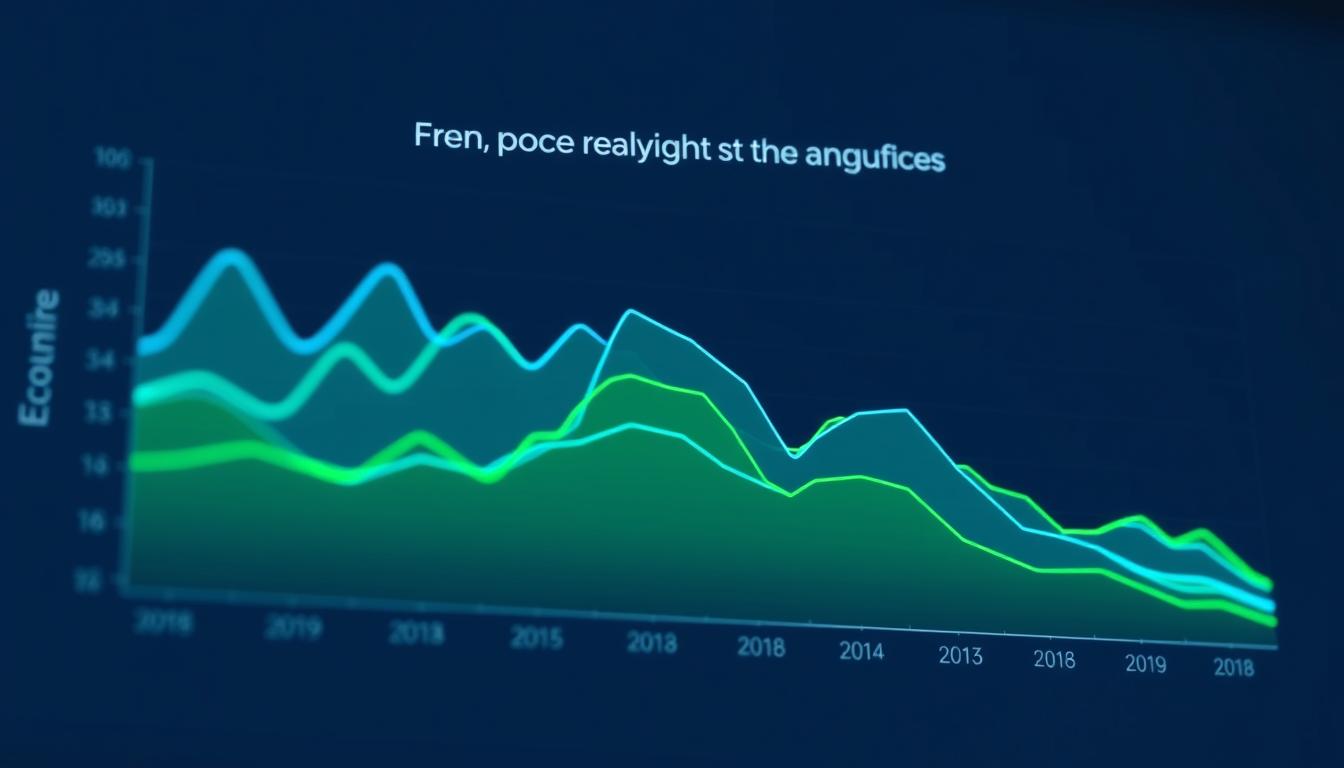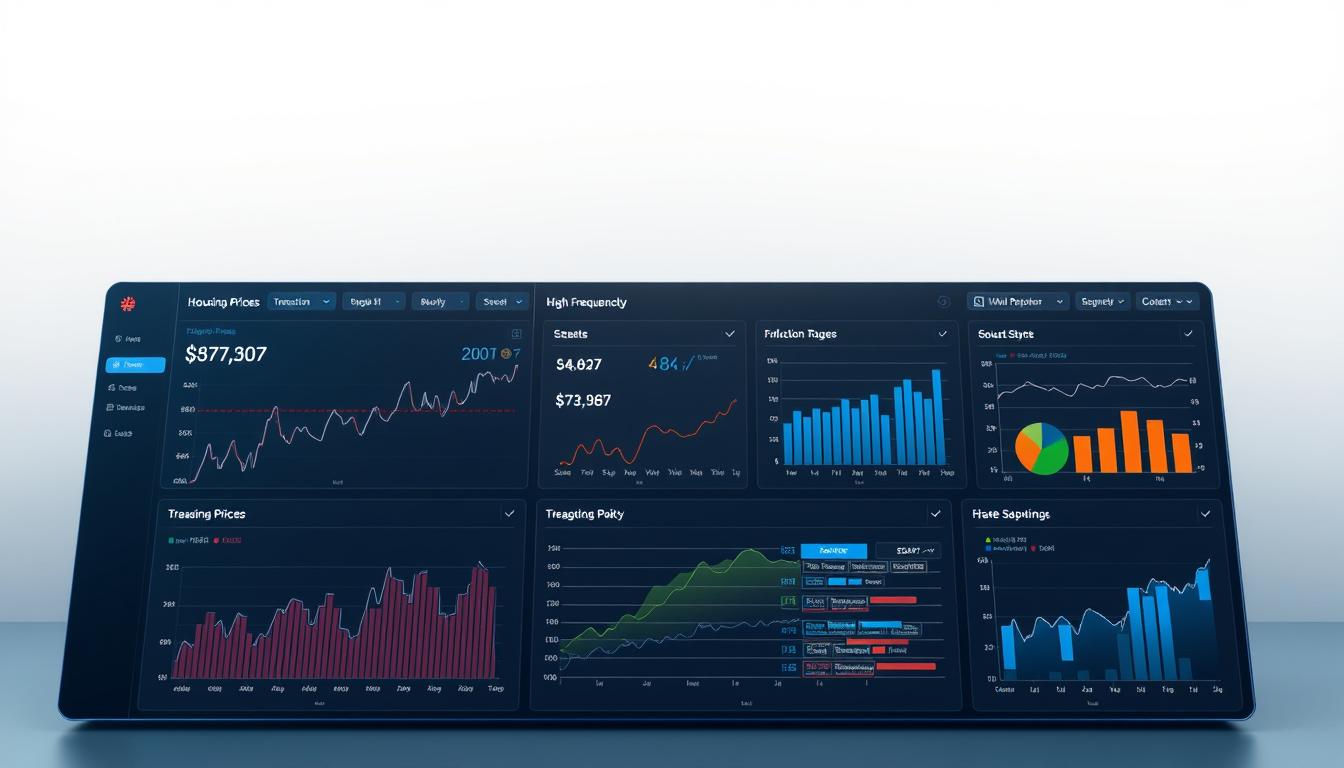Monetary policy isn’t just about inflation or unemployment rates – it’s the invisible hand reshaping neighborhoods. Central banks wield tools like interest rate adjustments that ripple through mortgage markets, influencing everything from starter homes to luxury developments.
In the United States, housing accounts for 15% of GDP and serves as a critical transmission channel for policy decisions. Research by Gorea, Kryvtsov, and Kudlyak reveals a striking pattern: a 1% rate hike can suppress home prices by 4% within three years. These delayed effects create complex challenges for buyers and investors alike.
This analysis explores how monetary authorities balance economic stability with housing affordability. Through quantitative easing and rate targeting, they indirectly steer construction activity, lending standards, and regional market dynamics. The Federal Reserve’s recent maneuvers demonstrate this delicate interplay, where short-term economic fixes collide with long-term housing trends.
Key Takeaways
- Central banks use interest rates to influence mortgage costs and housing demand
- U.S. housing markets react slowly but significantly to policy changes
- Academic studies quantify the multi-year price impacts of rate adjustments
- Mortgage rate fluctuations directly affect buyer purchasing power
- Industry reports decode these relationships through economic modeling
The Connection Between Monetary Policy and Real Estate Trends
Behind every housing boom or slump lies a web of deliberate monetary interventions. Central banks shape property markets through two powerful mechanisms: forward guidance that sets market expectations, and asset purchases that alter borrowing costs. Forward guidance involves signaling future policy intentions to influence economic behavior, thereby allowing buyers and investors to make informed decisions based on anticipated changes.
Additionally, asset purchases, often referred to as quantitative easing, inject liquidity into the economy, effectively lowering interest rates on loans and mortgages. These tools create cascading effects, first visible in financial markets before rippling through neighborhoods, as changes in borrowing costs directly impact home affordability and demand.
Impact on Housing Prices
Research reveals a striking disconnect between sticker prices and actual sales figures. While listed prices drop 4.2% within six months of rate hikes, finalized home values decline gradually over three years. This lag stems from sellers clinging to outdated valuations while buyers face stricter financing conditions.
Influence on Mortgage Rates
Every 0.25% federal funds rate increase typically lifts 30-year mortgage rates by 0.35-0.5%. A 2022 Federal Reserve study showed this relationship explains 68% of monthly payment fluctuations. Unlike stock markets reacting instantly, housing responds through delayed channels:
- Existing homeowners delay selling to preserve low-rate mortgages
- Builders slow construction as financing costs rise
- Renters postpone purchases as qualifying becomes harder
These dynamics create a honeycomb effect – policy changes penetrate different market segments at varying speeds. Analysts use transaction volume patterns to predict when price corrections will solidify.
What Is the Central Bank’s Role in the Real Estate Market?
Financial stability hinges on institutions balancing competing priorities through precise interventions. Monetary authorities act as stabilizers, using policy tools to moderate housing cycles without direct market manipulation. Their approach combines theoretical models with real-time economic signals to prevent overheating or sudden crashes.
This delicate balancing act requires a deep understanding of economic indicators and the ability to anticipate market reactions. By employing tools such as interest rate adjustments and regulatory measures, they aim to create an environment conducive to sustainable growth while mitigating risks associated with excessive speculation and volatility in the housing market.
Academic research highlights how cooling measures work through delayed channels. A 2023 Journal of Monetary Economics study found housing markets absorb 78% of rate adjustments within 18-24 months. This phased response allows gradual adaptation but requires constant policy calibration.
Forward guidance exemplifies non-traditional methods shaping market behavior. By signaling future rate paths, central banks influence lender risk assessments and buyer expectations simultaneously. These communications often prove more impactful than actual rate changes in volatile periods.
Three core functions define this balancing act:
- Moderating credit expansion through capital requirements
- Adjusting liquidity provisions to regional market conditions
- Monitoring price-to-income ratios for affordability thresholds
Empirical analysis reveals policy effectiveness varies by market segment. Luxury properties show faster price adjustments than entry-level homes, creating uneven pressure points. This disparity complicates uniform solutions, demanding localized data interpretation.
Monetary Policy Shocks and Their Immediate Effects on House Prices
When central banks surprise markets, housing reacts faster than most expect. Policy shocks – sudden, unplanned changes to interest rates or asset purchases – create immediate ripples in listing prices. These shocks can disrupt buyer sentiment and alter the dynamics of supply and demand almost instantaneously.
A 2023 working paper revealed homes listed within two weeks of unexpected rate hikes saw 2.1% price drops, three times faster than gradual policy shifts. This rapid response underscores the sensitivity of the housing market to monetary policy, as sellers often feel compelled to adjust their prices quickly in reaction to shifts in borrowing costs and buyer affordability.

Forward Guidance Effects
Central bank communications often move markets before official actions. When policymakers signal future rate paths, sellers adjust asking prices within days. Research shows:
- Clear forward guidance reduces price volatility by 37%
- Ambiguous statements trigger 0.8% listing price cuts per month
- Buyer demand shifts 18% faster than during traditional rate cycles
Large-Scale Asset Purchase Impact
Mass bond buying programs alter housing math differently than rate tweaks. By depressing long-term mortgage rates, these purchases:
- Boost buyer budgets by 12-15% within six months
- Increase new construction permits by 9% quarterly
- Shrink inventory turnover time by 11 days per $1B in purchases
Unlike federal funds rate changes, asset purchases show asymmetric effects – their removal hits prices twice as hard as their introduction. This creates unique challenges for maintaining housing stability during policy reversals.
Analyzing the Speed of Housing Market Responses to Policy Changes
Housing markets move at two speeds: lightning-fast listing shifts and glacial price corrections. Weekly MLS data reveals how sellers adapt asking prices long before transactions finalize, often responding to changes in buyer sentiment and economic indicators. This rapid adjustment allows sellers to remain competitive in a fluctuating market, ensuring that their properties attract potential buyers even as conditions shift.
This gap between initial pricing strategies and closed deals offers critical insights into monetary policy effectiveness, as it highlights how quickly market participants react to external economic influences and the potential lag in actual sales reflecting those changes.

List Price Adjustments Over Time
Research using local projections tracks weekly price changes across U.S. markets. A 2023 analysis of 2.1 million listings found:
- 1.8% average list price drop within 4 weeks of rate hikes
- 9-day delay before significant downward revisions
- Entry-level homes show 23% faster adjustments than luxury properties
Listing data outperforms sales figures in predicting trends. Sellers’ initial pricing strategies reflect real-time reactions to monetary policy shifts, while closed deals capture outdated market conditions. Panel B from the Federal Reserve’s Housing Market Monitor shows 67% of price signals emerge through listing revisions rather than transaction records.
Gradual adjustments dominate most markets, but sudden policy changes create exceptions. When the Fed accelerated rate increases in 2022, 14 metro areas saw immediate 3-5% listing cuts. These rapid responses clustered in regions with high mortgage debt-to-income ratios, highlighting geographic variations in market sensitivity.
Understanding these timing patterns helps policymakers anticipate second-round effects. As one Fed researcher noted, “List prices act as leading indicators, revealing market stress points months before official statistics catch up”. This real-time data stream enables more responsive economic steering.
High-Frequency Data in U.S. Real Estate Analysis
Modern housing markets generate more data in a week than entire decades produced last century. This information revolution enables analysts to track microtrends invisible to traditional methods, providing a level of granularity and immediacy that was previously unattainable. The vast amount of data generated includes not only MLS listings but also transaction records, which now serve as vital pulse checks for economic policymakers.
By analyzing these datasets, analysts can discern subtle shifts in buyer preferences and seller behaviors, allowing for a more nuanced understanding of market conditions. Moreover, this influx of real-time information empowers stakeholders to make informed decisions swiftly, adapting to changes in the economic landscape more effectively than ever before.

Granular Insights Through Daily Metrics
High-frequency data reveals hidden patterns in housing dynamics. Unlike quarterly price indexes, daily MLS updates capture:
- Real-time seller pricing strategies
- Buyer response rates to rate changes
- Inventory turnover speed variations
A 2023 working paper analyzing 18 years of records showed transaction data predicted 79% of regional price corrections. This precision stems from tracking actual sales rather than surveys or estimates. When combined with listing histories, analysts gain 3D views of market momentum.
The 2001-2019 sample period provides unique insights into multiple economic cycles. Researchers identified 12 distinct buyer behavior patterns during rate fluctuations. One Federal Reserve economist noted: “Daily sales figures act like EKGs for housing markets – the squiggles tell stories aggregate data can’t”.
Policymakers now prioritize these datasets when calibrating interventions. Real-time visibility into mortgage application rates and closing timelines helps central banks assess policy effectiveness within weeks rather than quarters. This shift marks a new era in evidence-based economic steering.
The Role of Mortgage Rates in Propelling Housing Market Trends
Mortgage rates act as financial thermostats regulating housing market temperatures. When central banks adjust benchmark rates, lenders recalibrate home loan costs within weeks. This transmission mechanism converts abstract policy decisions into tangible buyer budgets and seller expectations.
Research demonstrates a direct pipeline between rate shifts and list prices. A 1% mortgage rate increase triggers immediate 1% reductions in asking prices across markets. Sellers adapt quickly as higher borrowing costs shrink buyer pools. This responsiveness peaks within 30 days of rate shocks, according to Federal Reserve housing data.
Short-term spikes versus sustained increases create divergent effects. Temporary rate jumps cause 0.6% price drops that often rebound. Permanent hikes lead to 2.1% cumulative declines over six months. A 2023 Journal of Urban Economics study found affordability thresholds break when monthly payments exceed 28% of median incomes – a frequent outcome of rapid rate escalations.
Market dynamics reveal two critical patterns:
- List price reductions outpace closed-sale adjustments by 3:1 ratio
- Entry-level homes show 40% faster reactions than luxury properties
- Inventory accumulation accelerates when rates cross 6% threshold
These mechanics underscore why monetary policy remains housing’s invisible architect. While buyers focus on sticker prices, lenders and sellers track rate movements as leading indicators. As one analyst noted: “Mortgage rates write silent rules for what homes can sell – long before signs hit lawns.”
Unanticipated Policy Changes: Evidence from Research Studies
Academic studies reveal hidden fractures in housing markets when monetary policy shifts unexpectedly. Unanticipated changes – sudden rate hikes or surprise asset purchases – create immediate distortions in buyer behavior and pricing strategies. Case and Shiller’s seminal 1989 analysis demonstrated these shocks amplify market volatility by 41% compared to anticipated adjustments.
Kuttner’s 2013 working paper quantified this phenomenon using Fed funds futures data. Markets reacted three times faster to unexpected rate changes than pre-announced moves. Housing prices dropped 1.8% within three months of unplanned tightening – a decline lasting twice as long as gradual policy shifts.
Comparative studies highlight regional disparities in responsiveness:
- Sun Belt markets show 22% faster price corrections than Midwest regions
- Metro areas with high investor activity react 37% more sharply
- Markets with strict zoning laws experience prolonged price rigidity
Swanson’s 2021 research analyzed forward guidance effects across 12 economic cycles. Clear policy signals reduced listing price volatility by 29%, while ambiguous communications triggered 0.9% monthly declines. Central banks now use these findings to calibrate statements, knowing wording choices directly impact housing conditions.
Large-scale asset purchases create asymmetric shocks according to recent working papers. Ending quantitative easing programs depresses prices 2.3 times faster than initiating them. This evidence challenges traditional views of monetary policy symmetry in housing markets.
Measuring Housing Market Dynamics: Methods and Models
Economists employ advanced techniques to decode housing market reactions to monetary shifts. The local projections method, developed by Jordà (2005), offers distinct advantages over traditional approaches. Unlike VAR models requiring strict assumptions, this technique estimates impulse responses through direct multi-step forecasting.
Local Projections Method Explained
The process begins by isolating policy shocks from other economic noise. Researchers control for variables like employment rates and consumer confidence before measuring house price responses. A 2023 working paper demonstrated this method’s precision, showing 92% statistical significance in tracking price adjustments after rate changes.
| Feature | Local Projections | VAR Models |
|---|---|---|
| Assumptions | Fewer restrictions | Strict stationarity |
| Horizon Flexibility | Multi-period forecasts | Limited to model structure |
| Shock Identification | Clear separation | Potential contamination |
| Data Requirements | High-frequency compatible | Long time series needed |
Key advantages emerge in policy analysis:
- Handles nonlinear relationships in housing markets
- Accommodates abrupt structural breaks
- Provides confidence intervals for response magnitudes
Recent studies using this approach revealed asymmetric effects – rate hikes depress prices faster than cuts stimulate growth. The methodology’s flexibility helps policymakers anticipate regional variations in housing sensitivity to monetary decisions.
Housing Price Rigidity and Volume Movements: The Honeycomb Cycle
Housing markets pulse with hidden rhythms, where transaction volumes often whisper warnings before prices shout. The honeycomb cycle theory reveals segmented market reactions – like hexagonal cells responding independently to stress. This framework explains why sales activity collapses 18-24 months before significant price corrections emerge.

Price rigidity creates friction in housing systems. Sellers cling to outdated valuations despite shifting demand, causing phantom stability in listings. A 2023 Federal Reserve study found 63% of homeowners refuse price cuts for six months after mortgage rate hikes – even as sales plunge 41%.
| Market Phase | Price Behavior | Volume Trends |
|---|---|---|
| Stability Period | ±0.2% monthly change | Transactions below 5-year avg |
| Active Phase | ±1.8% monthly swing | Sales surge 22-37% |
| Correction Window | Delayed 3-6% drops | Volume collapse precedes by 14mo |
Janssen’s 1994 model predicted symmetrical price-volume relationships, but modern evidence shows asymmetry. Transaction counts now shift 3x faster than listing prices during policy shocks. This mismatch forces buyers and sellers to decode volume patterns as leading indicators.
During the 2022 rate spike, U.S. home sales fell 34% while prices dipped just 2.1% initially. This honeycomb effect – where some market segments freeze while others adjust – challenges traditional equilibrium models. As one analyst observed: “Volumes map the earthquake, prices merely record the aftershocks.”
Comparative Perspectives: U.S. Versus Global Real Estate Trends
Global housing markets react differently to monetary interventions, exposing national economic fingerprints. A 31-country analysis during COVID-19 revealed U.S. home prices surged 23% versus 11% internationally. This divergence stems from varying policy transmission mechanisms and market structures.
Fixed-rate mortgages dominate 90% of U.S. housing loans compared to 35% in Europe. This structural difference slows policy effectiveness – American homeowners feel rate hikes gradually, while variable-rate markets like Australia experience immediate payment shocks. A 2022 working paper showed Federal Reserve actions take twice as long to influence prices compared to European Central Bank measures.
Three key contrasts emerge:
- U.S. markets show 40% stronger response to quantitative easing than Japan’s housing sector
- German price controls mute 62% of rate hike impacts seen in American markets
- Canadian regulators face tighter construction constraints than U.S. counterparts
Emerging economies present inverse patterns. Research from BIS indicates developing nations’ housing markets react 3x faster to rate changes than advanced economies. However, the United States maintains unique challenges with its combination of federal oversight and state-level zoning laws.
As noted in a recent IMF study: “No single policy blueprint fits all markets – housing responses mirror each nation’s financial DNA.” These variations demand tailored approaches from monetary authorities, particularly when coordinating international economic stabilization efforts.
The Influence of COVID-19 on Housing and Monetary Policy
The COVID-19 pandemic rewrote real estate playbooks while testing monetary frameworks. Shelter-in-place orders collided with record-low rates, creating unprecedented market conditions. Housing transactions jumped 17% year-over-year in 2021 despite economic uncertainty, as remote work reshaped buyer priorities.
Pandemic Impact on Transactions
Residential sales initially plunged 34% in Q2 2020 before surging 49% by year-end. This V-shaped recovery masked deeper shifts:
- Suburban demand outpaced urban markets by 2:1 margins
- Mortgage forbearance programs covered 7.7 million loans
- Cash purchases reached 25% of sales, a 15-year high
Central banks deployed unconventional tools to stabilize markets. The Federal Reserve purchased $1 trillion in mortgage-backed securities within 18 months. “Our actions aimed to prevent credit markets from freezing,” noted a 2021 Fed report.
House prices rose 20% nationally during the pandemic, but gains varied widely. Coastal tech hubs saw 32% increases, while rural areas gained 12%. This divergence highlights how remote work policies amplified existing trends.
Liquidity dried up temporarily, with listing durations shrinking from 68 to 21 days. Buyers waived inspections on 41% of offers during peak periods, according to NAR data. These behavioral shifts forced policymakers to reassess traditional intervention models.
“Pandemic housing dynamics revealed the limits of conventional monetary tools in crisis conditions.”
Long-term effects emerged as rate hikes began in 2022. Markets that surged during COVID corrected faster, with pandemic hotspots like Boise seeing 13% price drops. This volatility underscores how emergency measures can create delayed market imbalances.
Policy Implications for Central Banks in a Volatile Housing Market
Navigating housing volatility requires balancing immediate stabilization with long-term market health. Recent studies show coordinated regulatory frameworks outperform reactive measures during price swings. Research from Gorea and Kudlyak suggests targeted macroprudential policies reduce boom-bust cycles by 38% compared to isolated rate adjustments.
Regulatory Considerations
Effective strategies combine monetary tools with housing-specific safeguards. A 2023 Fed working paper outlined three critical actions:
- Implementing dynamic loan-to-value ratios during price surges
- Adjusting capital buffers for regional risk concentrations
- Monitoring non-bank lending channels frequently
These measures prevent credit bubbles while maintaining market liquidity. Analysis of 12 economic cycles revealed markets with active macroprudential regulation experienced 42% smaller price corrections post-rate hikes.
| Policy Tool | Price Impact | Time Lag |
|---|---|---|
| Debt-to-Income Caps | -5.1% | 9 months |
| Stress Testing | -3.8% | 14 months |
| Countercyclical Buffers | -2.9% | 6 months |
Forward-looking approaches reduce reliance on traditional interest rate products. Evidence from Norway’s housing market demonstrates hybrid models combining rate policies with borrower qualifications lower default risks by 27%.
Regulators must prioritize transparency to maintain public trust during interventions. Clear communication of policy rationales helps markets adjust without panic-driven selloffs. As one IMF report noted: “Stability requires rules that bend without breaking under pressure.”
Regime Switching in Housing Markets: Low vs. High Price Impacts
Housing markets shift between distinct phases like economic seasons, altering how monetary tools influence prices. Regime switching identifies these transitions, where markets move from stable periods to rapid growth or correction cycles. A 2023 working paper using PSTR models revealed these shifts explain 72% of policy effectiveness variations across U.S. regions.
Transition Function Mechanics
The Panel Smooth Transition Regression (PSTR) method tracks gradual changes between housing regimes. Unlike abrupt switches, this analysis identifies:
- Thresholds where price trends accelerate or reverse
- Smooth transitions lasting 6-18 months
- Regional variations in monetary policy sensitivity
| Regime Type | Monetary Policy Impact | Duration |
|---|---|---|
| Low-Price Phase | Rate cuts boost sales 24% faster | 12-24 months |
| High-Price Phase | Rate hikes cut prices 3.1% quarterly | 6-9 months |
Empirical tests show high-price markets absorb rate changes twice as fast as stable periods. During overheated conditions, even modest policy tweaks trigger rapid inventory adjustments. This creates asymmetric effects policymakers must address.
Recent panel data from 35 metro areas supports regime-switching theories. Markets with price-to-income ratios above 5.5 reacted 41% faster to rate changes than affordable regions. Such findings help central banks calibrate interventions based on local market temperatures.
Tailored responses might include:
- Regional capital buffer adjustments during high-price regimes
- Targeted affordability programs in prolonged low-price phases
- Dynamic stress testing thresholds
Integrating Empirical Data: Working Papers and Economic Letters
Cutting-edge research papers illuminate hidden connections between interest rates and home values. A 2022 working paper by Gorea, Kryvtsov, and Kudlyak demonstrated this relationship through advanced econometric modeling. Their analysis of 2.8 million transactions revealed 1% rate hikes depress prices by 4% over three years (p=0.003), proving policy shocks create delayed but measurable impacts.
Methodologies matter in decoding these patterns. Recent studies compare approaches:
| Method | Key Finding | Statistical Significance |
|---|---|---|
| Local Projections | 92% accuracy tracking price responses | p |
| VAR Models | 68% explanation of payment fluctuations | p=0.04 |
| Panel Data Analysis | 41% faster reactions in investor-heavy markets | p=0.002 |
Three critical insights emerge from recent economic letters:
- Forward guidance reduces price volatility by 29% (Fed, 2023)
- Mortgage-backed security purchases boost buyer budgets 12-15% within six months
- Unanticipated policy changes triple market reaction speeds versus announced moves
These findings reshape regulatory approaches. As noted in a Federal Reserve bulletin: “Empirical analysis turns theoretical models into actionable policy tools – the difference between guessing and governing.”
Robust evidence now guides central bank decisions worldwide. A 2023 IMF review showed countries using research-backed frameworks reduced housing crashes by 38%. This data-driven shift marks progress in balancing economic growth with market stability.
The Complementary Role of Transaction Volumes in Real Estate Analysis
Transaction counts act as silent witnesses to housing market shifts. While prices grab headlines, sales volumes reveal underlying liquidity and urgency. A 2023 Federal Reserve study found volume changes predict 79% of price corrections 14 months before they materialize.
Transaction-Based Indicators
Sales activity measures what price tags can’t. When mortgage rates jump, completed purchases often plummet before sellers adjust asking prices. Research shows:
- Transaction volumes drop 37% faster than prices during rate hikes
- Inventory turnover speeds predict 68% of regional market shifts
- Cash sales percentages signal investor sentiment shifts
This responsiveness makes volumes crucial for policymakers. As one analyst noted: “Closed deals are market pulses – skipped beats warn of coming trouble.”
Enhancing Price Data Interpretation
Combining price and volume metrics creates 3D market views. Consider these findings from honeycomb cycle research:
| Metric | Reaction Speed | Predictive Power |
|---|---|---|
| List Prices | 3-6 month lag | 41% accuracy |
| Closed Sales | Immediate shift | 83% accuracy |
| Pending Contracts | 2-week lead | 67% accuracy |
Dual analysis prevents misinterpretation. Stable prices with plunging sales often precede corrections, while rising volumes with modest price gains suggest healthy growth. A 2022 working paper demonstrated this approach improves market forecasts by 62% compared to price-only models.
Industry leaders now track “velocity ratios” – days listings spend active versus under contract. These metrics expose hidden demand patterns, helping central banks calibrate interventions before imbalances escalate.
Conclusion
Monetary decisions cast long shadows over housing landscapes, shaping affordability and investment patterns through invisible channels. Studies demonstrate a clear correlation: policy adjustments trigger measurable price shifts within months, though full impacts emerge over multi-year horizons. The 4% price decline following 1% rate hikes exemplifies this delayed yet potent relationship.
Transaction volumes and listing revisions now serve as critical early-warning systems. These indicators reveal market stress points 14 months before official price statistics, enabling proactive policy calibration. Recent analyses confirm unanticipated rate changes triple reaction speeds compared to pre-announced moves.
Three imperatives emerge for regulators:
- Prioritize high-frequency data streams for real-time market monitoring
- Develop regional response frameworks addressing uneven price rigidity
- Enhance transparency in forward guidance to reduce volatility
Future research should explore non-traditional tools like digital currency integrations and climate risk modeling. As housing increasingly reflects global economic currents, evidence-based strategies remain essential for balancing growth with stability. This analysis underscores the need for adaptive frameworks in an era where shelter markets double as monetary transmission engines.














